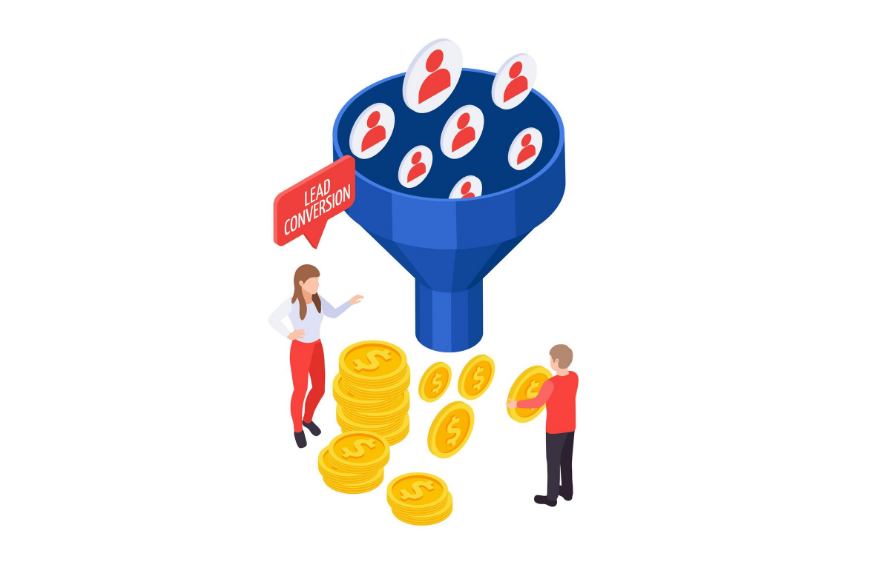Table of Contents
- Introduction to Behavioral Analytics in B2B Sales
- Understanding Customer Behavior Through Data
- The Role of Behavioral Segmentation in Targeting
- Personalizing the Sales Approach
- Predictive Analytics and Future Sales Trends
- Challenges in Implementing Behavioral Analytics
- Case Studies: Successful B2B Companies Using Behavioral Analytics
- Integrating Behavioral Analytics with Other Sales Tools
- Conclusion: The Future of B2B Sales with Behavioral Analytics
Introduction to Behavioral Analytics in B2B Sales
Behavioral analytics is an innovative approach that helps businesses understand the actions and interactions of their customers throughout the sales process. In the context of B2B sales, this methodology is particularly significant, as it provides insights into buyer behavior, preferences, and decision-making patterns. By analyzing data collected from various touchpoints, organizations can develop a more comprehensive understanding of what influences purchasing decisions in a business context.
The essence of behavioral analytics lies in its ability to track a multitude of actions taken by potential clients on digital platforms, such as website visits, content engagement, and even interactions with sales representatives. This data is then leveraged to create detailed customer profiles, enabling companies to tailor their marketing strategies and sales approaches to meet the specific needs of their target audience. As a result, businesses can identify trends and make data-driven decisions that significantly impact sales performance.
Moreover, behavioral analytics fosters a proactive approach to customer engagement. By predicting buyer behavior and preferences, organizations can devise strategies to enhance the customer experience, leading to stronger relationships with clients. For example, understanding when a customer is most likely to convert can help sales teams to optimize their outreach efforts, ensuring they align with the buyer’s journey. This dynamic not only drives sales growth but also helps in building long-term loyalty, as buyers feel understood and valued by the company.
In an increasingly competitive B2B landscape, utilizing behavioral analytics has become essential for organizations seeking to differentiate themselves. As companies strive to increase their sales effectiveness, adopting this analytical approach will empower them to gain a competitive edge by aligning their offerings with the distinct preferences and behaviors of their customers.
Understanding Customer Behavior Through Data
The landscape of B2B sales is increasingly shaped by the ability to understand customer behavior through the lens of data analytics. In today’s data-driven environment, businesses have access to a myriad of information points that can significantly enhance their understanding of customer preferences and decision-making processes. This includes an array of data types such as website interactions, purchasing patterns, and engagement metrics.
Website interactions serve as a foundational element in analyzing customer behavior. By tracking metrics such as page views, time spent on specific sections, and click-through rates, companies can gauge which content is resonating with their audience. Analyzing these interactions provides insights into the interests and pain points of potential clients, allowing businesses to tailor their messaging and offerings more effectively. For instance, frequent visits to product pages may indicate a lead’s intent, prompting sales teams to engage proactively with personalized communication.
Purchasing patterns also play a crucial role in forming a comprehensive customer profile. By examining historical transaction data, businesses can identify trends regarding what products or services are most frequently purchased and at what times. This information not only aids in inventory management but also assists in predicting future purchasing behavior. Understanding these patterns enables companies to implement targeted promotions or upselling opportunities at strategic moments, ultimately driving revenue growth.
Engagement metrics, including response rates to marketing campaigns and social media interactions, further enrich customer profiles. These metrics reveal the effectiveness of different communication channels and the types of content that elicit responses from prospects. By analyzing engagement data, businesses can adjust their sales strategies, ensuring they reach customers in the most effective manner possible. Together, these data points contribute to a nuanced understanding of customer behavior, empowering organizations to develop informed sales strategies that enhance their growth potential.
The Role of Behavioral Segmentation in Targeting
Behavioral segmentation has emerged as a pivotal strategy in the realm of B2B sales, enabling businesses to identify and categorize customers based on their behaviors rather than traditional demographic data. This approach utilizes behavioral analytics to monitor actions such as purchase history, engagement with marketing materials, website interactions, and overall customer journey. By moving beyond surface-level demographic information—such as age, gender, or location—companies can obtain deeper insights into what drives their customers’ decisions, leading to more informed targeting.
The process of identifying different buyer personas through behavioral segmentation involves categorizing customers based on their patterns of behavior. This can include segmenting customers who frequently engage with the brand’s content, those who are likely to request demos or trials, and customers who show interest in specific products or services. Each of these segments reflects distinct needs and desires, evidencing why a one-size-fits-all approach remains ineffective in modern marketing strategies. By leveraging behavioral data, companies can tailor their marketing messages and offers precisely to what resonates with each segment.
Furthermore, utilizing behavioral analytics allows organizations to craft customized campaigns that speak directly to the specific motivations and pain points of each buyer persona. For instance, a customer segment that frequently engages with educational content may respond better to informative webinars and case studies, while another segment inclined towards making quick purchasing decisions may appreciate more straightforward promotional offers. The goal is to enhance engagement and increase sales opportunities by ensuring that marketing efforts align with the behavioral tendencies of each customer group.
Ultimately, the integration of behavioral segmentation into marketing strategies not only aids in more effective targeting but also fosters stronger customer relationships, paving the way for sustained sales growth through a better understanding of customer behavior.

Personalizing the Sales Approach
In the competitive landscape of B2B sales, understanding customer behavior has become paramount. Behavioral analytics provides invaluable insights into how potential buyers interact with products and services. By analyzing these interactions, businesses can tailor their sales strategies to meet the unique needs of each prospect, ultimately enhancing personalization.
Personalization in the B2B sales process can be significantly improved through the insights derived from behavioral analytics. For instance, by monitoring how customers engage with content—such as whitepapers, blogs, or product demos—organizations can discern which topics resonate most effectively with their audience. This information allows sales teams to create targeted outreach strategies based on informed insights rather than assumptions. Consequently, the communication becomes more relevant, addressing the specific pain points and needs of the prospective buyer.
Additionally, by segmenting customers based on their behavior patterns, sales teams can prioritize leads that exhibit higher engagement levels, thereby optimizing their resources. Insights gained from behavioral analytics can also guide businesses to personalize their marketing strategies, ensuring that communications are not only relevant but also timely, which can significantly improve conversion rates. For example, if data indicates a potential buyer has repeatedly visited a pricing page, a timely follow-up with tailored offers can facilitate a stronger connection and prompt decision-making.
Furthermore, the integration of behavioral analytics encourages a mindset of continuous improvement in B2B sales. As organizations gather data, they can refine their personalized approaches based on real-time feedback and evolving customer behavior. This adaptive strategy not only enhances customer relations but also fosters trust, leading to long-term business relationships. In today’s data-driven market, leveraging behavioral analytics for personalized communication is not merely beneficial, it is essential for driving growth and achieving sales objectives.
Predictive Analytics and Future Sales Trends
Predictive analytics, leveraging behavioral analytics, has emerged as a vital tool for businesses seeking to forecast future buying behaviors and sales trends with greater accuracy. By employing advanced machine learning algorithms, companies can analyze historical behavior data to identify patterns and trends that inform future actions. This dynamic approach enables organizations to make data-driven decisions, thereby enhancing sales efficiency and optimizing marketing strategies.
At the core of predictive analytics is the ability to process vast amounts of data from various sources, including past sales records, customer interactions, and market trends. By examining this historical data, machine learning models can recognize patterns that human analysts might overlook, allowing businesses to pinpoint potential opportunities and risks. For instance, if a particular product category has consistently shown an upward trend during specific seasons, predictive analytics can highlight this behavior, prompting companies to adjust their inventory and marketing strategies accordingly.
Moreover, predictive analytics aids in the identification of key customer segments that are likely to convert or churn, based on their previous behaviors. By tailoring outreach and messaging to these groups, organizations can enhance customer engagement and drive future sales growth. Additional benefits of predictive analytics include improved forecasting accuracy, which leads to better resource allocation and strategic planning. Companies can proactively address declines in sales by deploying targeted promotions or refining their product offerings based on predicted trends.
As businesses increasingly embrace predictive analytics, they gain a significant advantage in the competitive landscape. By utilizing behavioral insights to inform their strategies, companies can respond swiftly to market changes and customer needs. Ultimately, the integration of predictive analytics into a B2B sales framework empowers organizations to harness their historical data to not only understand past performance but also to foresee and shape future sales trends effectively.
Challenges in Implementing Behavioral Analytics
Implementing behavioral analytics in B2B sales can be a transformative endeavor, yet it is not devoid of challenges. One primary concern is data privacy. As organizations gather and analyze vast amounts of customer data to understand behavior patterns, they must also navigate complex regulations surrounding data protection, such as GDPR and CCPA. Ensuring compliance while harnessing the power of analytics is paramount. Organizations need proactive strategies to educate their teams on data privacy and invest in secure data handling practices, paving the way for ethical use of customer information.
Another obstacle is the requirement for appropriate technology and tools. Behavioral analytics relies on sophisticated software and platforms that can process and interpret customer data effectively. Many businesses, particularly smaller ones, may face barriers related to budget constraints or lack of technical expertise. It is essential for organizations to carefully evaluate their current technology landscape and adopt scalable solutions that align with their specific sales processes. By prioritizing investments in technology, companies can empower their sales teams to access insights that drive performance.
Additionally, potential resistance from sales teams may hinder the adoption of behavioral analytics. Sales professionals are often accustomed to traditional methods and may be skeptical about the insights derived from data analytics. To mitigate this challenge, businesses can involve their sales teams early in the implementation process. Training sessions and workshops that showcase the tangible benefits of behavioral analytics can enhance buy-in from sales personnel, demonstrating how data-driven insights can enhance their strategies and ultimately improve sales performance.
Overcoming these challenges is critical to harnessing the full potential of behavioral analytics. A strategic approach that addresses data privacy, embraces the right technology, and fosters collaboration with sales teams can lead to significant sales growth.

Case Studies: Successful B2B Companies Using Behavioral Analytics
Behavioral analytics has gained substantial traction among B2B companies as a potent tool for enhancing their sales strategies. Examining real-world case studies provides valuable insights into how businesses have navigated challenges to achieve measurable growth. One notable example is Company A, a leading software firm that faced declining lead conversion rates. By integrating behavioral analytics into their sales process, they were able to identify patterns in user engagement. The analytics indicated that certain features on their platform attracted more attention, prompting the sales team to tailor their outreach efforts accordingly. As a result, Company A reported a 30% increase in conversion rates over six months.
Another compelling case is that of Company B, a manufacturer of industrial equipment. This company struggled with retaining clients and understanding the factors behind customer churn. By employing behavioral analytics, they were able to identify key touchpoints in the customer journey that were vital for customer satisfaction. The analysis revealed that prompt follow-up and personalized communication significantly reduced churn rates. In response, Company B implemented automated engagement workflows based on user behavior, resulting in a 25% decrease in customer attrition within the first year.
Lastly, Company C, a digital marketing agency, utilized behavioral analytics to enhance its cross-selling strategy. The firm analyzed client interactions and discovered that clients who utilized their service in one specific area were highly likely to benefit from additional services. By leveraging these insights, Company C crafted targeted marketing campaigns that aligned with client behaviors. This strategic shift led to a remarkable 40% increase in cross-sell transactions over just six months, illustrating the direct impact of behavioral analytics on enhancing sales growth.
These case studies underscore the transformative power of behavioral analytics in the B2B landscape, showcasing how tailored strategies born from data-driven insights can significantly impact sales performance.
Integrating Behavioral Analytics with Other Sales Tools
Integrating behavioral analytics with other sales and marketing tools is a strategic approach that can significantly enhance overall sales performance. As businesses increasingly rely on data-driven insights, the combination of behavioral analytics with systems such as Customer Relationship Management (CRM) platforms, email marketing tools, and lead generation software is vital. This integration creates a cohesive tech stack that facilitates efficient data flow and comprehensive analysis.
One of the foremost benefits of integrating behavioral analytics with CRM systems is the enriched customer profiling it enables. By analyzing customer interactions and preferences, sales teams can leverage insights drawn from behavioral data to tailor their communications and optimize client engagement strategies. This fine-tuning not only enhances customer experiences but also drives higher conversion rates through targeted outreach.
Email marketing platforms also stand to gain from the integration of behavioral analytics. By understanding how recipients engage with emails—such as opening rates, click-through rates, and responses to particular content—marketing teams can use this data to craft more compelling campaigns. Behavioral insights allow for the segmentation of audiences based on actions taken, thereby fostering more personalized messaging and driving engagement.
Moreover, integrating behavioral analytics with lead generation software yields valuable insights into potential customers’ readiness to purchase. By tracking online behavior, such as website visits and content downloads, sales teams can better gauge the interest levels of leads, enabling them to prioritize follow-ups and align their sales tactics with specific needs. The seamless integration of these tools not only improves operational efficiency but also fosters a culture of collaboration and continuous improvement across sales and marketing teams.
In essence, the careful integration of behavioral analytics with other sales tools creates a unified system. This enhances the ability to leverage actionable insights that ultimately drive B2B sales growth.
Conclusion: The Future of B2B Sales with Behavioral Analytics
As the landscape of B2B sales continues to evolve, the integration of behavioral analytics emerges as a pivotal component for driving growth and competitiveness. Throughout this discussion, we have explored how behavioral analytics empowers companies to gain insightful perspectives into customer behaviors, preferences, and decision-making processes. By analyzing data on interactions and engagement, businesses can make informed decisions that enhance their sales strategies and foster stronger relationships with clients.
The value of leveraging behavioral analytics lies in its ability to provide a deeper understanding of the buyer’s journey. It allows businesses to identify patterns that signify when potential customers are most likely to convert, enabling them to tailor their outreach efforts effectively. This data-driven approach not only processes historical trends but also predicts future behaviors, establishing a proactive stance in managing client interactions.
In an increasingly competitive and data-rich environment, companies that embrace behavioral analytics stand to gain a substantial advantage. These organizations can pivot their strategies based on real-time feedback, optimize their sales processes, and ultimately enhance customer satisfaction. Furthermore, as technology and analytical methodologies advance, the potential applications of behavioral analytics will expand, revealing new opportunities for innovation and customer engagement.
In conclusion, the future of B2B sales is intricately linked to the adoption of behavioral analytics. Organizations that recognize and harness the transformative power of this tool will be well-prepared to navigate the complexities of the modern sales landscape. By committing to a data-driven approach, businesses can unlock substantial growth, optimize their sales strategies, and establish a lasting competitive edge in their respective industries.






Leave a Reply